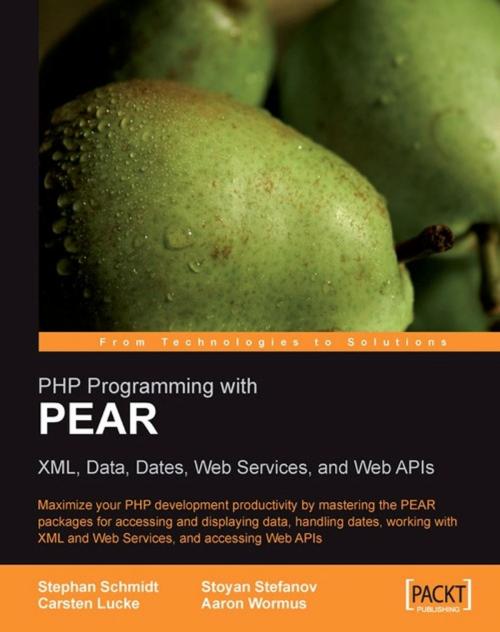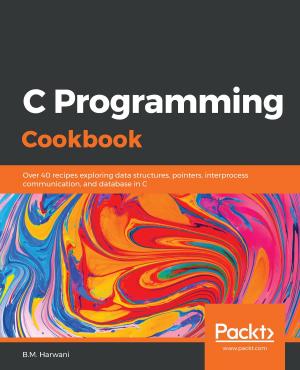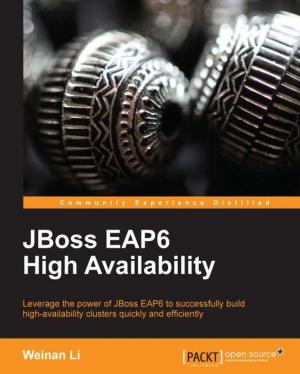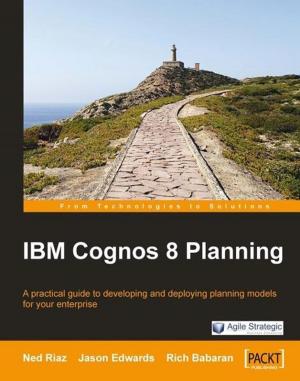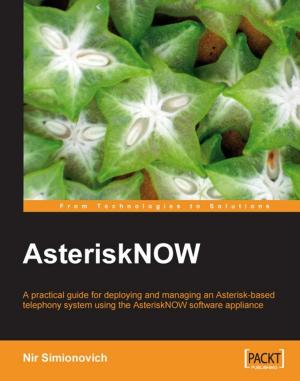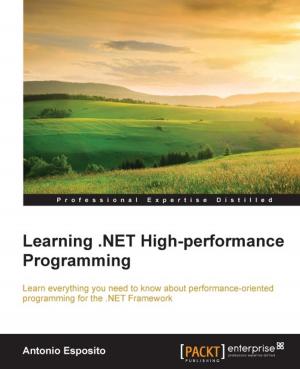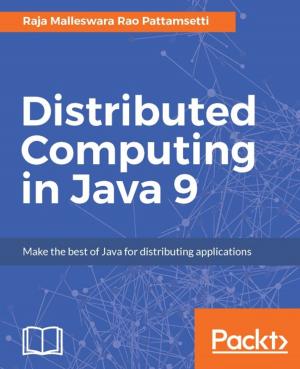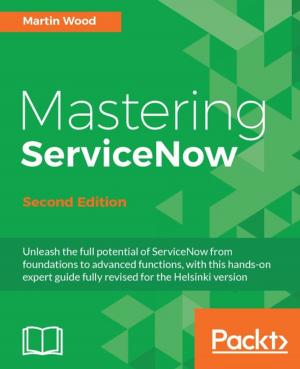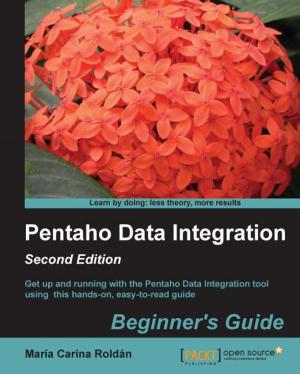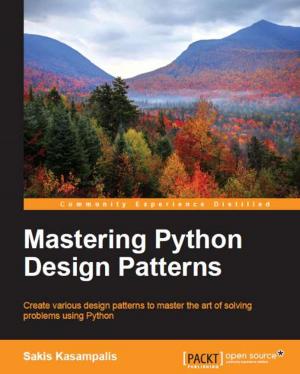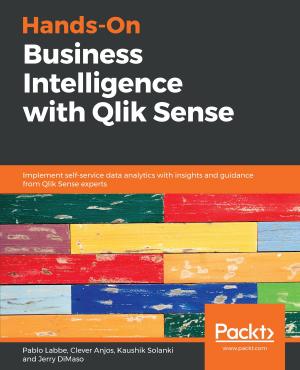| Author: | Carsten Lucke, Stoyan Stefanov | ISBN: | 9781847190642 |
| Publisher: | Packt Publishing | Publication: | March 1, 2006 |
| Imprint: | Packt Publishing | Language: | English |
| Author: | Carsten Lucke, Stoyan Stefanov |
| ISBN: | 9781847190642 |
| Publisher: | Packt Publishing |
| Publication: | March 1, 2006 |
| Imprint: | Packt Publishing |
| Language: | English |
XML, Data, Dates, Web Services, and Web APIs
About This Book
- Maximize your productivity through the use of proven, powerful, reusable PHP components
- In-depth coverage of a range of important PEAR packages
- Many code examples provide a clear and practical guidance
Who This Book Is For
This book is for PHP developers who want to maximize their productivity through the use of proven, high-quality, reusable PEAR components. Some experience of working with PEAR classes will prove helpful, and developers who've used PEAR before can find something new to delight them.
What You Will Learn
Chapter 1 shows you how to access databases with the MDB2 package. You will learn:
Connecting to the database, and instantiate objects
Executing queries and fetching data
MDB2 SQL abstraction; sequences, replace queries, sub-select support, prepared statements
Using MDB2 modules
Extending MDB2 to provide custom fetch and result classes, iterators, and modules
Chapter 2 explains how to use PEAR packages to display data . It teaches you:
Creating powerful tables of data easily with the HTML_Table package
Advanced table formatting with HTML_Table_Matrix
Creating Excel spreadsheets dynamically with Spreadsheet_Excel_Writer
Adding formatting to these spreadsheets including colors, patterns, formulae and number formatting
Creating flexible, sortable grids of data with Structures_DataGrid
Adding columns to the grid, control paging, select data sources, and renderers
Using File_PDF to create PDF documents on the fly
Chapter 3 covers the usage of PEAR packages to work with XML and stresses on:
Creating XML documents with XML_Util, XML_Fastcreate
Transforming PHP objects to XML format with XML_Serializer
Creating Mozilla applications with XML_XUL
Parsing XML with XML_Parser
Processing XML documents to PHP objects with XML_Unserializer
Parsing RSS with XML_RSS
Chapter 4 is an extensive tutorial on working with web services and Web API's using PEAR packages. We cover the following topics:
Consuming web services
Consuming XML-RPC-based web services
Accessing the Google API
Searching blog entries with Services_Technorati
Accessing the Amazon web service
Accessing the Yahoo API
Offering XML-RPC-based web services
Offering SOAP-based web services
Offering REST-based services using XML_Serializer
Chapter 5 covers PEAR's date and time functions using the PEAR::Calendar and PEAR::Date packages such as:
Creating, manipulating, and comparing Date objects
Data_Span arithmetic
Handling timezones with Date_Timezone
Keeping track of public holidays with Date_Holiday
Using the Calendar class to display an HTML calendar
In Detail
PEAR is the PHP Extension and Application Repository, and is a framework and distribution system for reusable, high-quality PHP components, available in the form of "packages".
In this book, you will learn how to use a number of the most powerful PEAR packages available to boost your PHP development productivity. By focusing on these packages for key development activities, this book is an in-depth guide to getting the most from these powerful coding resources.
Style and approach
Packed with code examples, every topic is explained in a clear, practical way.
XML, Data, Dates, Web Services, and Web APIs
About This Book
- Maximize your productivity through the use of proven, powerful, reusable PHP components
- In-depth coverage of a range of important PEAR packages
- Many code examples provide a clear and practical guidance
Who This Book Is For
This book is for PHP developers who want to maximize their productivity through the use of proven, high-quality, reusable PEAR components. Some experience of working with PEAR classes will prove helpful, and developers who've used PEAR before can find something new to delight them.
What You Will Learn
Chapter 1 shows you how to access databases with the MDB2 package. You will learn:
Connecting to the database, and instantiate objects
Executing queries and fetching data
MDB2 SQL abstraction; sequences, replace queries, sub-select support, prepared statements
Using MDB2 modules
Extending MDB2 to provide custom fetch and result classes, iterators, and modules
Chapter 2 explains how to use PEAR packages to display data . It teaches you:
Creating powerful tables of data easily with the HTML_Table package
Advanced table formatting with HTML_Table_Matrix
Creating Excel spreadsheets dynamically with Spreadsheet_Excel_Writer
Adding formatting to these spreadsheets including colors, patterns, formulae and number formatting
Creating flexible, sortable grids of data with Structures_DataGrid
Adding columns to the grid, control paging, select data sources, and renderers
Using File_PDF to create PDF documents on the fly
Chapter 3 covers the usage of PEAR packages to work with XML and stresses on:
Creating XML documents with XML_Util, XML_Fastcreate
Transforming PHP objects to XML format with XML_Serializer
Creating Mozilla applications with XML_XUL
Parsing XML with XML_Parser
Processing XML documents to PHP objects with XML_Unserializer
Parsing RSS with XML_RSS
Chapter 4 is an extensive tutorial on working with web services and Web API's using PEAR packages. We cover the following topics:
Consuming web services
Consuming XML-RPC-based web services
Accessing the Google API
Searching blog entries with Services_Technorati
Accessing the Amazon web service
Accessing the Yahoo API
Offering XML-RPC-based web services
Offering SOAP-based web services
Offering REST-based services using XML_Serializer
Chapter 5 covers PEAR's date and time functions using the PEAR::Calendar and PEAR::Date packages such as:
Creating, manipulating, and comparing Date objects
Data_Span arithmetic
Handling timezones with Date_Timezone
Keeping track of public holidays with Date_Holiday
Using the Calendar class to display an HTML calendar
In Detail
PEAR is the PHP Extension and Application Repository, and is a framework and distribution system for reusable, high-quality PHP components, available in the form of "packages".
In this book, you will learn how to use a number of the most powerful PEAR packages available to boost your PHP development productivity. By focusing on these packages for key development activities, this book is an in-depth guide to getting the most from these powerful coding resources.
Style and approach
Packed with code examples, every topic is explained in a clear, practical way.
